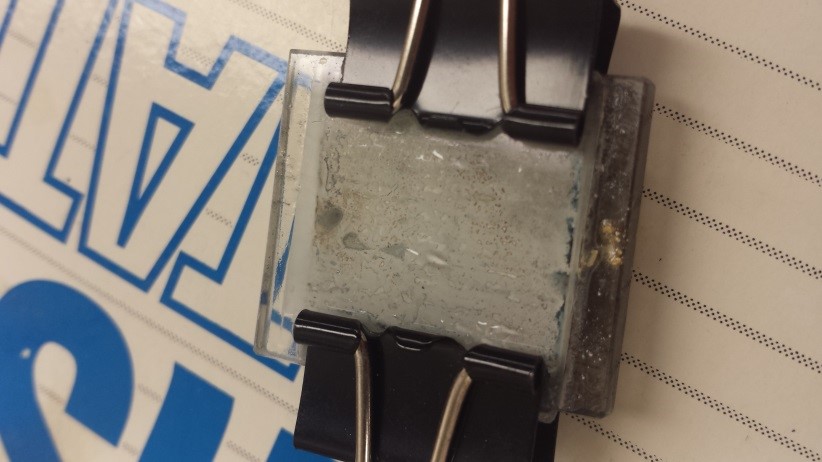There have been many trials along the way for myself and my ragtag group of chemical engineers to get to where we are today. What we learned very quickly when we started out was that bureaucracy and shipping have to be taking into account when planning the group’s research schedule. There have been multiple instances when the project was delayed by a couple of days or even a week or two due to a delayed order confirmation, issues with a corrosive chemical, or realizing that the estimated shipping time for a material was much longer than what we had anticipated. A hard lesson, but one we took in stride and with improved communication and pre-lab preparation we were able to make progress and make up for some of the lost time.
Luckily, the challenge of the project makes the learning experience worthwhile. Our project can be considered graduate or even PhD level material. We deal with creating a thin film and then combining it with an electrolyte that we hope, after reading about similar experiments and applications of variable emissive technologies, will produce the result we are looking to apply to the satellite that will eventually be jettisoned out into space. If successful, it will be a cheaper alternative to other variable emissive films that are currently being used on radiators for space travel and operations.
Our most recent success was in creating a complete circuit for our cell that contains the thin film. In order to change the properties of the material, a voltage must be applied. The fact that we have a completed circuit and possible evidence of a manipulation of the optical properties of the cell is a huge step forward. Once we confirm that what we saw was true with a thermal test, we could continue to experiment with other cell designs and begin planning to make a space-worthy cell.
Daniel Hinkel, Spacecraft Thermal Systems

